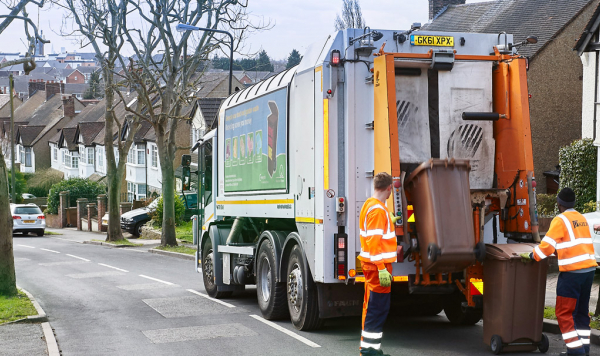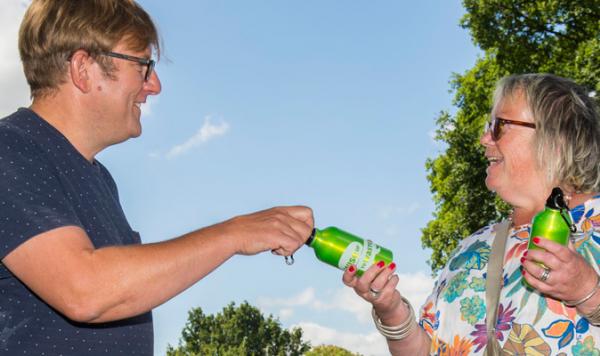Request
Dear Cheryl,
I would like to formally request to make a deputation at the NLWA meeting on 25 June 2020. As MP for Edmonton, I plan to voice concerns of my constituents on the NLHPP and ask the NLWA to pause the project and commission an independent review prior to proceeding with procurement activities. During my deputation, I will be the voice of my constituents on two main issues of concern: Public health - I plan to touch on the relationship between poor air quality and Covid-19; dangerously high levels of air pollution in Enfield; the impact of ultra-fine particulate matter; the role of the size of the new incinerator; and recent calls on the government to review its air quality strategy. Social justice - I would like to draw attention to the fact that three of my wards—Edmonton Green, Upper Edmonton, and Lower Edmonton—are among the most-deprived wards in England; the correlation between poor air quality, social and economic deprivation, and racial inequality; the need for a full and fair consultation; and the need for clarity regarding emissions. For the purpose of the deputation, my full contact details are as follows: Kate Osamor MP, House of Commons, London, SW1A 0AA. 020 7219 6602 kate.osamor.mp@parliament.uk
I would be grateful if you could confirm receipt of this message and distribute my request to make a deputation to the NLWA Board members in advance of the meeting.
With many thanks, Kate
Response
Dear Ms Osamor,
I am writing to you regarding your deputation to the North London Waste Authority (NLWA) meeting on Thursday 25 June 2020. This was in relation to the North London Heat and Power Project (NLHPP). I would like to thank you for joining the meeting and setting out the issues you wanted to draw to Members’ attention.
Following a thorough review of the proposed project, including the points raised in the deputations, I am letting you know that Members unanimously approved the start of procurement for the new Energy Recovery Facility (ERF). As promised in the meeting, we are responding in writing to each deputation. I have outlined the key points you raised and provided a response for each below, to advise you of Members’ understanding of these issues in making their decision.
In your deputation you raised your concerns around the link between public health and incineration, with specific reference to ultra-fine particulate matter and air pollution. You also referred to the size of the new incinerator. Firstly, we want to reassure you that that no concentrations of pollutants from the facility will breach any air quality or public health standards. Prior to submitting an application for the NLHPP, NLWA carried out extensive modelling and surveys, including an Air Quality Impact Assessment for the Development Consent Order (DCO). This thorough analysis followed best practice for new energy recovery facilities and categorically shows that the facility will not breach any air quality or public health standards. This includes the limits on particulates established by the European Union Air Quality Limit Values. Public Health England (PHE) is also clear that modern, well run and regulated municipal waste incinerators are not a significant risk to public health. Last year, PHE reviewed their statement on the basis of a major study by Imperial College London. The guidance remains unchanged on the basis of this up-to-date and comprehensive evidence. We are using the highest performing emissions-cleaning technologies, including selective catalytic reduction. This method will reduce NOx emissions to 60% of the limits set by the European Union’s Industrial Emissions Directive meaning that our ERF will be one of the safest, cleanest, and highest performing in the world. This is the same proven technology used in the Amager Bakke facility in Copenhagen – often pointed to as a global benchmark for emissions cleaning emissions and we are constantly looking into new global technologies to reduce our emission impact even further. In addition, the ERF will use proven baghouse filters to capture and control particulates, including ultrafine particles. The UK Air Quality Action Group, which advises the Government on air quality, is clear that modern ERFs are very effective at controlling particulates, and there are multiple studies to back this up. Public health guidance is made on the basis of multiple studies and the associated weight of evidence. As a result of the ERF emission controls, the contribution of the facility to pollutant concentrations at ground level is small. For the large majority of the year, its contribution is effectively zero and the predicted concentrations are well below the limits of detection. It would only be for a few hours a year that the contribution of the ERF would be measurable and this would be at levels of less than 2% of the relevant air quality standard for all but a few hours each year. In comparison, transport causes 29.6%, industry and commercial practices cause 11.2%, and biomass burning (including wood burning) causes 7.6%. The figures are from the London Emissions Inventory run by the GLA. Furthermore, emissions from the ERF are dispersed at height, which further reduces the impact on the air that people breathe at ground level. The emissions of ultrafine particles are generally at the same levels, or lower, than those present in the ambient air around the facility. In contrast, cars emit pollutants at ground level, which are much more damaging in relation to the air people breathe.
With regards to the size of the new ERF, NLWA’s waste modelling which has been scrutinised by an independent planning inspector, confirms that the ERF needs capacity to treat up to 700,000 tonnes of north London’s non-recyclable waste each year by 2050. As a public authority, our responsibility is to plan carefully for the future and make our decisions based on the best evidence. The NLWA’s comprehensive waste modelling examined population rises, employment and household income, as well as waste reduction and recycling increases in the future, all of which demonstrated the need to treat up to 700,000 tonnes of non-recyclable waste.
In your deputation you also referred to social justice, claiming that full and fair consultation needs to be carried out and clarity given regarding emissions. Extensive consultation was carried out prior to submitting the Development Consent Order (DCO) application, between November 2014 – June 2015 across all seven north London boroughs. This comprised a two-stage consultation process including 15 events and several meetings with community and statutory stakeholders. We also distributed newsletters to 28,779 properties within close proximity to the site and additional leaflets were left in community centres and libraries in all seven north London boroughs advertising the consultation events. NLWA hosted a website which included details of the consultation and advertised the events in the Enfield Independent, Haringey Independent and the Waltham Forest Guardian. Copies of the materials used in the consultation process can be found in the consultation report appendices here. The DCO was submitted to the Planning Inspectorate in October 2015 and following a public enquiry the Project was given consent by the Secretary of State in February 2017. During the public enquiry any person can assert their interest and their right to make representations about the application to the Inspectorate, whether this is to support or object the application. The DCO application would not have been accepted unless public consultation had been demonstrated and met requirements. NLWA continues its wide-reaching engagement on the Project with stakeholders across Edmonton. This includes regular Community Liaison Group meetings, newsletters, Twitter and website updates and community roadshows.
As part of our commitment to boosting economic activity in the local area, the NLHPP will deliver up to 100 apprenticeships for young people and 225 on-site skills training opportunities to upskill local people ready for employment. We are working closely with the north London boroughs and education providers to ensure that job opportunities and wider project benefits reach the local community where they are most needed.
In relation to air quality and in addition to what we have already outlined above, NLWA has been very clear about emissions, as detailed in the 2,000-page Environment Statement for the Project. This was subject to public and statutory consultation and reviewed by an independent Planning Inspector.
If you have any further questions about the Project or require any clarifications, I would be happy to answer them or arrange a briefing at a suitable time.
Yours sincerely,
Cllr Clyde Loakes


